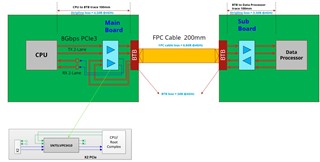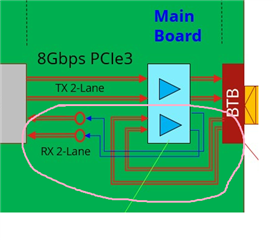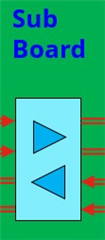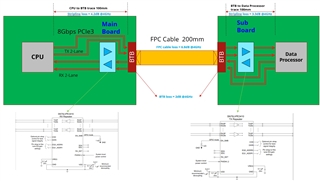Other Parts Discussed in Thread: SN75LVPE802
Hi TI member,
We have a case need PCIe GEN3 redriver for long distance as attach picture.
1. Would you pls give me a comment could SN75LVPE3410 ok for this case ?
2. If only one needs to be placed, could you suggest where it should be placed on which board?

BR,
Patrick.





